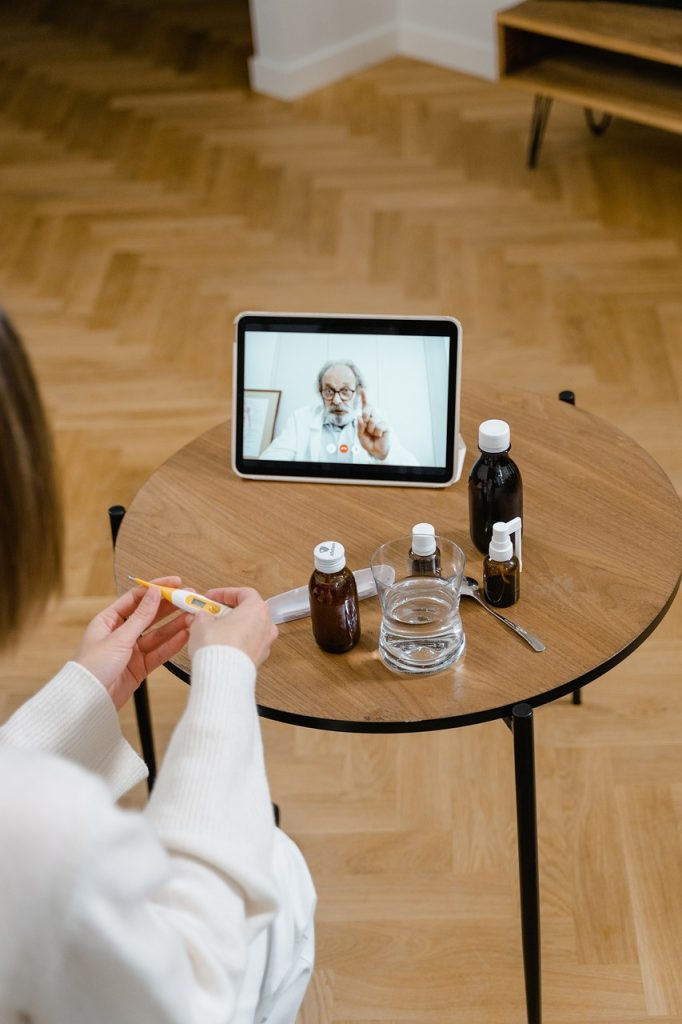Telehealth represents a significant shift in how healthcare services are delivered, leveraging technology to provide medical care remotely. With the advancement of digital tools and communication technologies, telehealth has become an essential component of modern healthcare, offering convenience, accessibility, and efficiency. This article explores the concept of telehealth, its benefits, applications, and the challenges it faces.

Understanding Telehealth
Telehealth encompasses a wide range of technologies and practices that enable patients and healthcare providers to connect remotely. It includes various forms of digital communication, such as video consultations, telephone calls, and mobile health applications. Telehealth aims to improve access to healthcare services, enhance patient outcomes, and streamline healthcare delivery.
- Telemedicine: A subset of telehealth, telemedicine specifically refers to the practice of medicine using telecommunications technology. It involves virtual consultations, remote diagnostics, and treatment planning.
- Teletherapy: This includes remote mental health services provided by therapists, psychologists, and counselors through video calls, phone calls, or online messaging.
- Remote Patient Monitoring (RPM): RPM involves using digital devices to monitor patients’ health conditions outside of traditional healthcare settings. Devices can track vital signs, glucose levels, and other health metrics.
- Mobile Health (mHealth): mHealth refers to the use of mobile devices, such as smartphones and tablets, to deliver health information, facilitate remote consultations, and manage health conditions.
Benefits of Telehealth
- Increased Accessibility: Telehealth breaks down geographical barriers, making healthcare accessible to individuals in remote or underserved areas. Patients can receive care without needing to travel long distances, which is especially beneficial for those with mobility issues or limited access to transportation.
- Convenience: Telehealth provides the convenience of receiving medical care from the comfort of one’s home. It eliminates the need for lengthy wait times in clinics and allows patients to schedule appointments more flexibly.
- Cost Savings: Telehealth can reduce costs associated with in-person visits, such as travel expenses and time off work. It also helps minimize the need for hospitalizations and emergency room visits by providing timely care and preventive services.
- Continuity of Care: Telehealth facilitates ongoing management of chronic conditions by allowing for regular check-ins and monitoring. Patients can stay connected with their healthcare providers, ensuring continuity of care and timely adjustments to treatment plans.
- Improved Health Outcomes: Remote monitoring and timely interventions through telehealth can lead to better management of health conditions, reducing the risk of complications and improving overall health outcomes.
- Enhanced Patient Engagement: Telehealth tools can empower patients to take an active role in their health management. Mobile apps and online platforms provide access to health information, treatment plans, and educational resources.
- Efficient Resource Utilization: Telehealth enables healthcare providers to optimize their time and resources. Virtual consultations can reduce the burden on healthcare facilities and staff, allowing them to focus on more critical cases.

Applications of Telehealth
- Virtual Consultations: Patients can consult with healthcare providers via video calls or phone calls for routine check-ups, follow-ups, and consultations. This is particularly useful for managing chronic conditions and obtaining specialist advice.
- Remote Patient Monitoring (RPM): Devices such as blood pressure monitors, glucose meters, and wearable fitness trackers collect health data that is transmitted to healthcare providers. RPM helps in tracking patients’ conditions in real-time and making informed decisions about their care.
- Teletherapy and Counseling: Mental health professionals provide therapy and counseling services through secure online platforms. This approach increases access to mental health support and allows for flexible scheduling.
- Telepharmacy: Telepharmacy services enable pharmacists to provide medication management, consultations, and counseling remotely. Patients can receive prescriptions, medication reviews, and advice on managing their medications.
- Health Education and Coaching: Telehealth platforms offer educational resources and coaching to help individuals manage their health and wellness. Programs may include lifestyle coaching, diet and nutrition advice, and fitness guidance.
- Emergency Consultations: In urgent situations, telehealth can facilitate quick consultations with healthcare professionals, providing guidance and triage before an in-person visit if necessary.
- Home Health Services: Telehealth supports home-based care by allowing healthcare providers to monitor patients, provide guidance, and manage care plans without requiring frequent in-person visits.
Challenges and Considerations
- Privacy and Security: Protecting patient data and ensuring secure communication is crucial in telehealth. Compliance with regulations such as HIPAA (Health Insurance Portability and Accountability Act) is essential to safeguard patient information.
- Technology Access and Literacy: Not all patients have access to the necessary technology or the skills to use telehealth platforms effectively. Addressing digital divides and providing support for technology use is important for equitable access.
- Quality of Care: Ensuring that telehealth services provide the same quality of care as in-person visits is a key consideration. Providers must adapt their practices to deliver accurate diagnoses and effective treatment remotely.
- Regulatory and Licensing Issues: Telehealth regulations vary by region and may impact the delivery of services across state or national borders. Navigating these regulations and obtaining necessary licenses can be challenging for providers.
- Reimbursement and Coverage: Insurance reimbursement for telehealth services can be inconsistent. Ensuring that telehealth services are covered by insurance plans and reimbursed fairly is important for the sustainability of telehealth programs.
- Patient Engagement: Engaging patients in their care through telehealth requires effective communication and support. Providers must ensure that patients understand how to use telehealth tools and are motivated to participate actively in their care.
- Integration with Traditional Care: Integrating telehealth with traditional in-person care requires coordination and communication among healthcare providers. Ensuring a seamless transition between virtual and in-person care is important for continuity.

Conclusion
Telehealth represents a transformative shift in healthcare delivery, offering increased accessibility, convenience, and efficiency. By leveraging digital technologies, telehealth enhances patient care and supports the management of health conditions. Despite its many benefits, telehealth also faces challenges related to privacy, technology access, and regulatory issues. As technology continues to advance and telehealth evolves, addressing these challenges and ensuring equitable access will be crucial for maximizing its potential and improving healthcare outcomes. Embracing telehealth with thoughtful implementation and continuous improvement can lead to a more connected, patient-centered, and efficient healthcare system.


